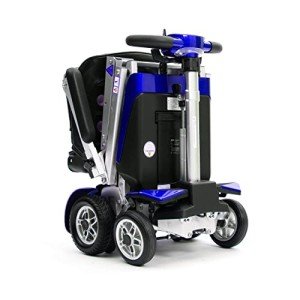A Comprehensive Guide to Buying a Mobility Scooter
Mobility scooters have actually become a vital tool for lots of people looking to improve their self-reliance and mobility. With a vast variety of models and functions available, choosing the ideal mobility scooter can be daunting. This article offers a useful guide to help customers browse their alternatives, assess their needs, and make a notified purchase.
Comprehending Mobility Scooters
Mobility scooters are electric lorries designed for individuals who experience mobility challenges. They are particularly useful for elders, those with specials needs, or individuals recuperating from injuries. Carrol Dalziel can differ widely in regards to style, features, and rates.
Types of Mobility Scooters
Before embarking on a purchase, it's vital to understand the various types of mobility scooters offered:
Three-Wheel Scooters:
- Generally more maneuverable in tight spaces
- Lightweight and portable
- Suitable for indoor usage
Four-Wheel Scooters:
- Offer higher stability and balance
- Ideal for outside usage over different terrains
- Normally have a longer battery life
Foldable/Portable Scooters:
- Designed to be quickly carried and saved
- Can typically fit in the trunk of a cars and truck
- Ideal for those who take a trip often
Sturdy Scooters:
- Built to accommodate larger people
- Frequently included more robust functions for outdoor use
- Generally equipped with larger batteries for extended range
Factors to Consider When Buying a Mobility Scooter
1. Weight Capacity
Pick a mobility scooter that can support the user's weight. A lot of scooters have a weight limit varying from 250 to 500 pounds. It is vital to make sure that the scooter can accommodate the user conveniently.
2. Variety and Battery Life
The variety is how far the mobility scooter can travel on a single charge. Typical varieties vary between 10 to 30 miles. Consider the user's day-to-day activities and choose a scooter with a suitable range.
3. Scooter Dimensions
Think about the size of the scooter, including its weight and dimensions. A more compact scooter may be perfect for narrow corridors and tight spaces, while bigger designs provide additional stability and convenience.
4. Terrain Capability
Evaluate where the scooter will mostly be utilized. If the user plans to travel primarily on pavement, a lightweight design might be sufficient. Nevertheless, if the user needs to pass through gravel or uneven surfaces, consider a four-wheel scooter built for off-road use.
Top Features to Look For
Convenience
- Adjustable Seats: Look for scooters with cushioned and height-adjustable seats to ensure comfort during travel.
- Armrests: These boost security and support while navigating.
Safety and Visibility
- Headlights and Taillights: Essential for nighttime usage.
- Turn Signals and Reflectors: Improve exposure and security while on the road.
User-Friendly Controls
- Joystick or Drive Controls: These ought to be user-friendly and easy to manipulate.
- Easy-to-Read Displays: A control panel that shows battery life, speed, and distance can improve the user experience.
Extra Features
- Storage Compartments: These offer added benefit for carrying personal products while on the go.
- Weather Protection: Consider models with rain covers or windshields if used in variable weather conditions.
Cost Considerations
When budgeting for a mobility scooter, rates can vary anywhere from ₤ 500 to over ₤ 5,000 depending upon the design, features, and brand. Additional expenses might consist of:
- Extended Warranty: Protects against flaws and can conserve cash in the long run.
- Accessories: Optional functions, such as upgraded seats, lights, or storage services.
| Feature | Cost Range |
|---|---|
| Basic Models | ₤ 500 - ₤ 1,500 |
| Mid-Range Models | ₤ 1,500 - ₤ 3,000 |
| High-End Models | ₤ 3,000 - ₤ 5,000 |
Financing Options
Numerous retailers offer funding plans, and some city government initiatives might offer grants or help for those in requirement. Examine prospective financial help with community resources or mobility service companies.
Frequently asked questions about Buying a Mobility Scooter
What is the distinction in between a mobility scooter and a wheelchair?
Mobility scooters are motorized and permit users to browse separately, while wheelchairs might need physical support or manual operation.
How do I keep a mobility scooter?
Regular maintenance includes examining battery life, cleaning the scooter, and examining tires and brakes. Constantly describe the user handbook for specific standards.
Can mobility scooters be used indoors?
Yes, many models are developed for both indoor and outside use. However, three-wheel scooters tend to be better matched for indoor navigation due to their tighter turning radius.
Are mobility scooters covered by insurance?
Some insurance plans cover a portion of the expenses for mobility scooters if they are considered clinically required. Contact your provider for particular details.
How quickly can a mobility scooter go?
Many mobility scooters have an optimal speed varying from 4 to 8 miles per hour. However, the appropriate speed might differ depending on local guidelines.
Acquiring a mobility scooter can significantly improve one's independence and lifestyle. By understanding the types, features, and costs connected with mobility scooters, potential purchasers can make educated choices that fit their requirements and preferences. Personalization and comprehensive research study are essential to ensuring satisfaction with this crucial investment.

